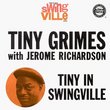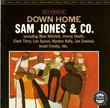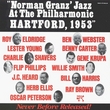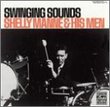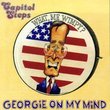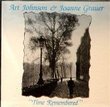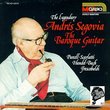| All Artists: Shelly Manne & His Men Title: More Swinging Sounds Members Wishing: 2 Total Copies: 0 Label: Ojc Release Date: 2/2/1993 Genres: Jazz, Pop Styles: Cool Jazz, Bebop Number of Discs: 1 SwapaCD Credits: 1 UPC: 025218632027 |
Search - Shelly Manne & His Men :: More Swinging Sounds
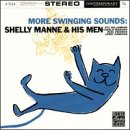 | Shelly Manne & His Men More Swinging Sounds Genres: Jazz, Pop
Japanese limited edition issue of the album classic in a deluxe, miniaturized LP sleeve replica of the original vinyl album artwork. |
Larger Image |
CD DetailsSynopsis
Album Description Japanese limited edition issue of the album classic in a deluxe, miniaturized LP sleeve replica of the original vinyl album artwork. Similar CDs
Similarly Requested CDs
|
CD Reviews#1 Greatest Small Band Jazz Album P. Simms | Williamsburg, VA | 04/23/2006 (5 out of 5 stars) "This is the fifth in the Shelly Manne & His Men series, using the same line-up as Volume 4, which I also reviewd. Unlike so many other times, when you love an album, but are disappointed with cheap follow-ups, by the same name, but using different people, this one does not disappoint. I can't say enough about the quality and importance of the individuals on this album. On the liner notes from the previous Volume-4, Andre Previn says that they were all, "Summa Cum Laude graduates of the wailing school." They were the stars of studio work and the best of the best, at performing. As with Volume-4, the tunes are unique and brilliantly arranged. The solos are likewise as close to perfect as you can get. Brilliant, melodic sax and piano players are a dime a dozen, but there are only a handful of trumpet players that play as melodically as Stu Williamson. There are no clunkers, no missed notes, and no high-speed noodling, hoping to find a way out of a gaff. One of the most often used studio trumpet players, Stu Williamson can be heard, getting to take a solo, along side Bud Shank, on the Mission Impossible (TV SHOW) sound track album...also a great jazz album. I've had heated words with a few people, over the years, about my claim that Stu Williamson was the best of the trumpet players, but when most of them listened to my recordings, they soon changed their minds. Miles Davis couldn't have made it as his spit-valve mopper.
I've read ancient critics' comments on Charlie Mariano, some lauding him as being the next Charley Parker, others lambasting him for sounding too much like him. Unfortunately, none of the critics I've read, would have known which end of a saxophone to stick up their nose. I'm a professional musician. and I've learned that you can revere another sax player, you can even emulate him and borrow from his library of phrasing. But in the end it is only you that counts. You either suck on your axe, or you don't. Whatever style you have is ultimately you...unless you suck so badly that you have to become a critic, just to earn a living. As with the previous Volume-4, the arrangements and solos are as perfect as they can be, as if they were cast in a mold...except that these guys are improvising all but the very obvious. Their version of Charley Parker's "Moose The Mooch" is the most musical and yet cleanest I have ever heard. The end of the solos is punctuated with sax/trumpet duet, a tribute to Charley Parker that should bring tears to a few eyes. When I heard Russ Freeman's, "The Wind", for the first time, I was ovecome by how lyrical Russ and Stu could be, after honking through Parker's Bop classic. I found this album on vinyl, as a sixteen year old, budding, jazz musician, when visiting my girlfriend's family. Talk about emotional memories. But what is really odd is that nothing is on any generation of liner notes about who's playing the valve trombone. Though one of the most used studio guys on trumpet, it took finding him on dozens of albums before someone noted that, though an accomplished trumepet player, he was considered the very finest player of the valve trombone. The center-piece of this album is Bill Holman's "Quartet", listed as a suite in four parts, written specifically for this line-up. Missing from the CD, but on the original vinyl, it says that Bill wrote this as a piece in the classical sonata form, with the movements related to each other in different ways. At age 16, I learned each and every lick Shelly plays on this album. I played along with the record, and thought I had every note down pat. Using mallets in the third movement, I then heard that though I was using two hand to play a fast single stroke roll, on the small tom, the pitch on Shelly's went up, from someone's elbow. Shelly was switching from two hands to a single hand roll, as fast as I could play it with two hands, and didn't miss a beat. The fourth movement, as in classical music, calls together all the baggage accumulate up until now, in the previous movements. Charley Mariano is just brilliant, introducing the final onslaught of this peice. There's room to blow for everyone, but the most spectacular part is the ending, which is a fugue. One of the best recorded and engineered albums of its day, as each instrument states and re-states the fial themes, you can hear each voice. It's a fugue, and though the louder trumpet and sax state their themes, you can here Russ Freeman's piano cranking back at them, like different manuals and voices of a Bach Fugue for organ. For many officianados, Shelly's solo on Volume-4, or his work on the Jack Montrose Sextet album, are considered to be his finest. His work on this album should be considered in the same league. Ever "The Drummer's Drummer", Shelly's work on "Quartet" is also like nothing heard before. Like Volume-4 of Shelly's "Men" albums, this is also as pefect as can be done." |

 Track Listings (5) - Disc #1
Track Listings (5) - Disc #1